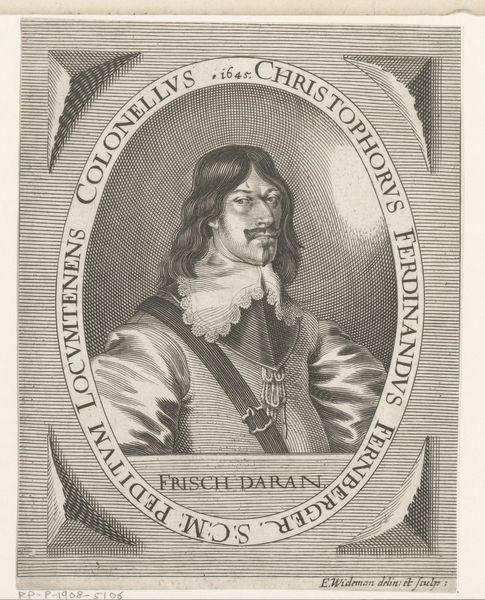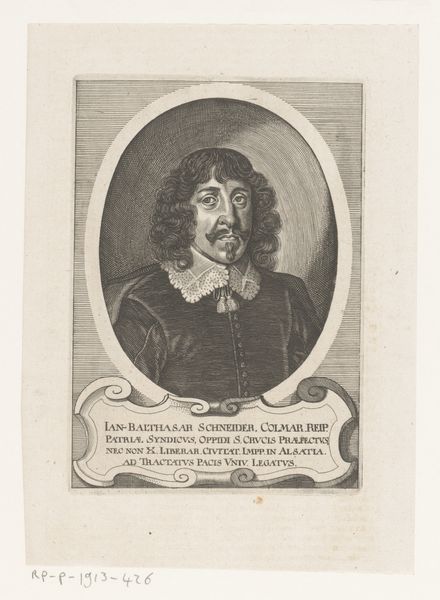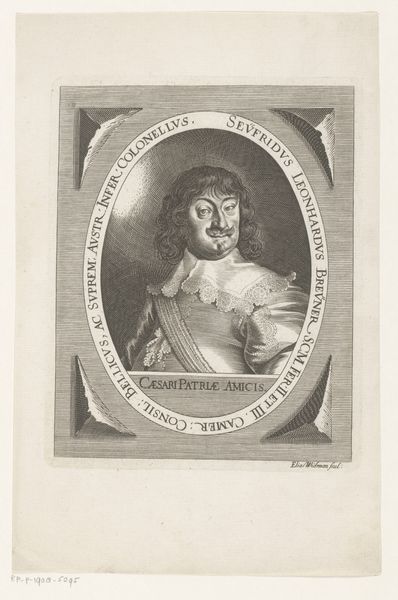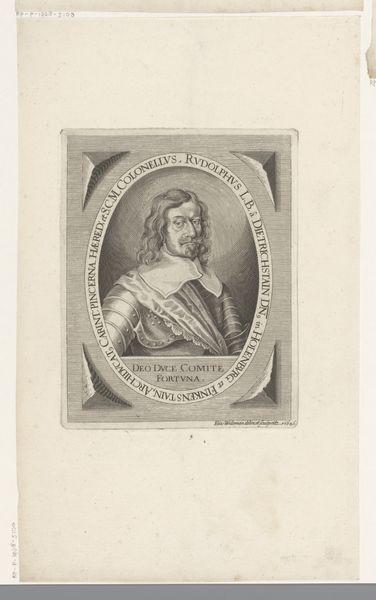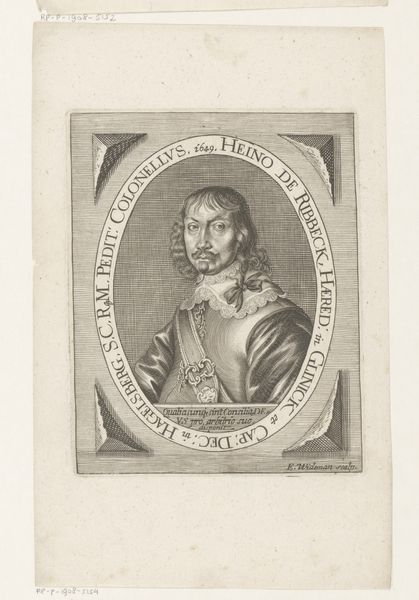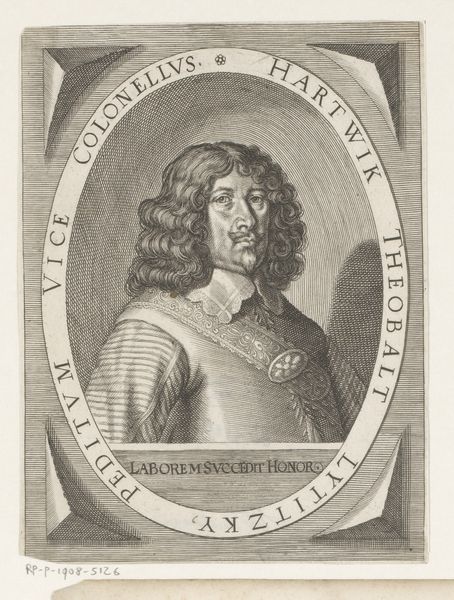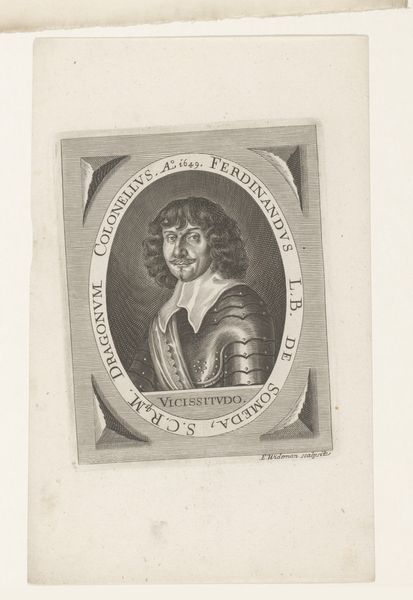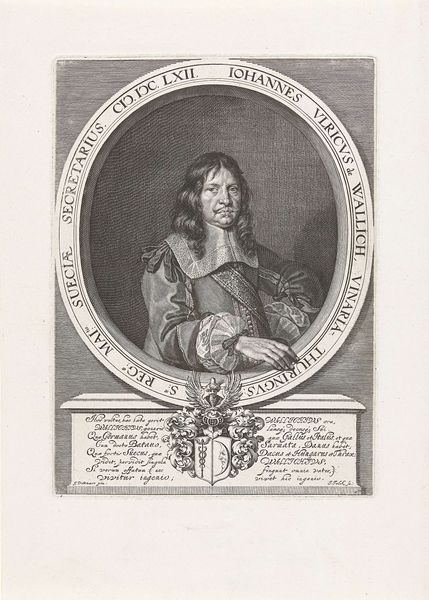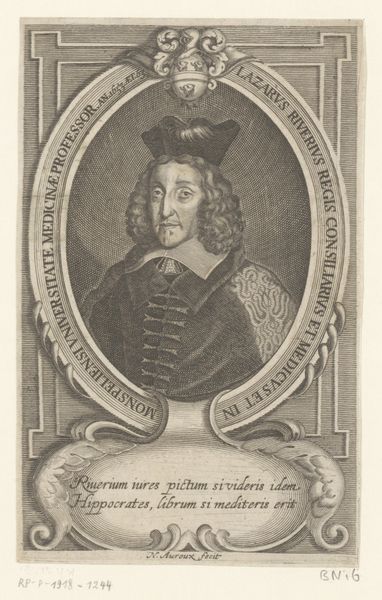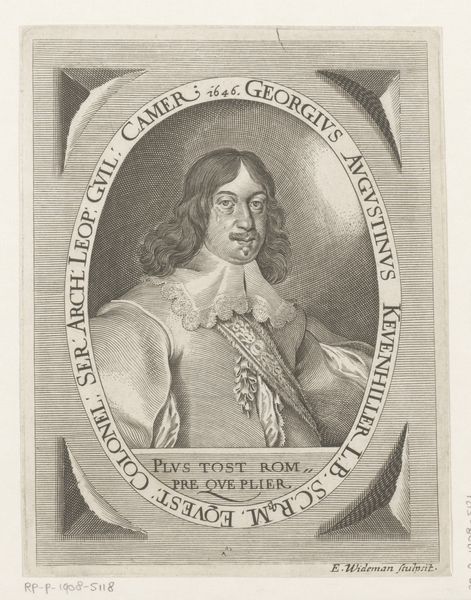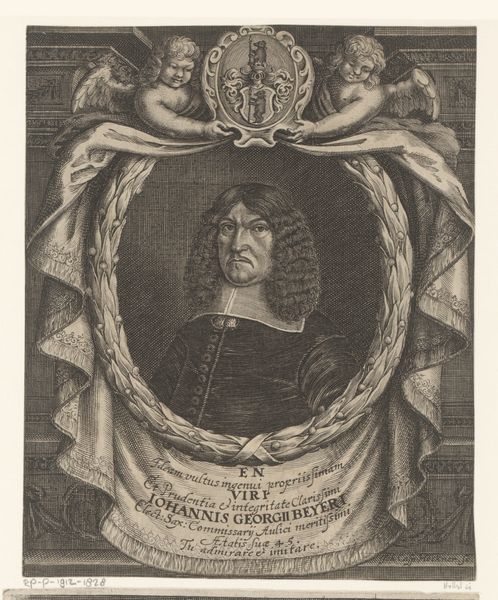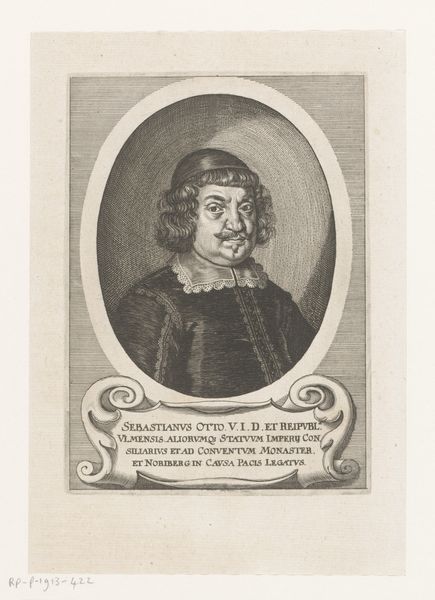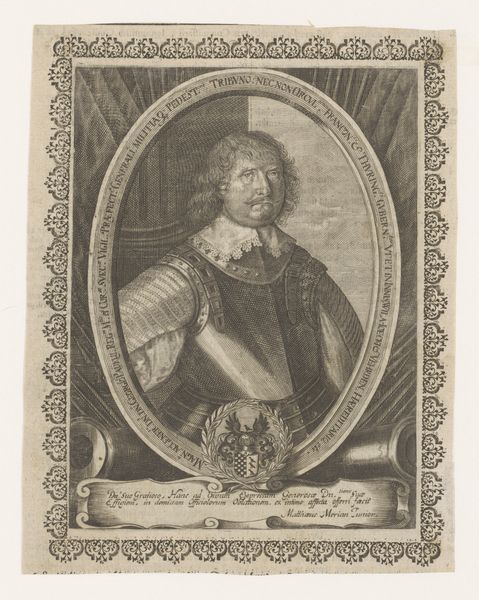
print, engraving
#
portrait
#
baroque
# print
#
old engraving style
#
engraving
Dimensions: height 151 mm, width 117 mm
Copyright: Rijks Museum: Open Domain
Curator: Here we have a work from the Rijksmuseum: a print entitled "Portret van Georg Friedrich von Schlick zu Passaun," made sometime between 1634 and 1651 by Elias Widemann. Editor: It's immediately striking, the contrast! That tightly controlled, almost obsessive hatching of the engraving, against the softly illuminated face... almost theatrical in its effect. Curator: Absolutely, the printmaking process itself becomes integral to understanding the artwork. Consider the engraver's tools, the copperplate, and the press – the very means of producing and disseminating images played a vital role in shaping public perception. Think of this in terms of labor: the engraver, likely working for a workshop, reproducing this portrait for a specific audience, contributing to the visual culture and circulating images of power. Editor: Agreed, the materials themselves impose a rigid structure! Look at the almost geometrical rendering of his collar. It is all angular forms and crisp details – everything is clearly defined. The circular frame only accentuates this contained, deliberate quality. Curator: And it's important to place this within the context of the Baroque period. Notice how the lines aren’t just there to delineate forms. It’s not just about the aesthetics; it reflects the socio-political structure and the mechanisms for making portraits like this available for wider consumption. Who commissioned it? Who was intended to receive it, and why? These questions give insight into both its meaning, as well as the cultural values and exchanges. Editor: Of course. However, if we isolate it aesthetically, and consider the composition... there’s a clear emphasis on symmetry, a carefully constructed balance in light and dark, shadow and the halo of light that throws him into high relief. What appears like visual weight is in fact all line. Curator: Indeed, analyzing this artwork through its material and historical context allows us to delve into the forces that produced it and its place within a larger cultural narrative. Editor: While focusing solely on its intrinsic qualities deepens our perception and illuminates its complex interplay of line and light—providing insight to a time long gone.
Comments
No comments
Be the first to comment and join the conversation on the ultimate creative platform.
